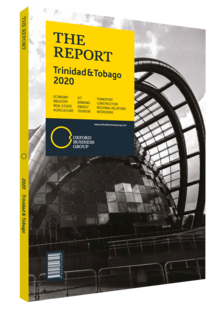Trinidad and Tobago builds on successes of neighbouring stock exchanges
The Trinidad and Tobago Stock Exchange (TTSE) is the largest and among the most important stock markets in the Caribbean. However, it was out-performed by the Jamaica Stock Exchange (JSE), whose impressive headline growth since 2015 has led some in T&T to draw lessons from the smaller but more dynamic bourse. “We should look to the expansion in Jamaica’s capital markets as an example in the Caribbean,” Hadyn Gittens, CEO of the T&T Securities and Exchange Commission, told OBG, noting that the JSE has over 40 companies listed on the junior market alone.
Jamaica’s Growth
The JSE was founded in 1968, but it did not mature until the latter half of the 20th century. Indeed, in its early years it was outperformed by the TTSE. This was largely attributed to the different growth trajectories between the two countries. Unlike T&T – which enjoyed strong growth towards the end of the 20th century due to its oil and gas reserves – Jamaica struggled economically since gaining independence from the UK in 1962.
The Jamaican economy traditionally relied on agriculture and mineral exports, but the country has since shifted towards tourism and financial services. The transition has become even more pronounced, with services accounting for 70% of the economy, according to Heritage Foundations’s 2019 Index of Economic Freedom. The JSE benefitted greatly, with investors attracted to the country’s stability, English-speaking workforce and experience with financials.
International media has taken note, with Bloomberg and the Financial Times describing the JSE as the world’s best-performing bourse in 2019. The JSE expanded by 35% in the 12 months to October 2019, and by 600% in the five years leading to the same month. Meanwhile, in T&T wider economic expansion is subdued, but the JSE’s performance is providing Jamaica with a platform to gain prominence in the global markets.
The JSE has worked to update its systems to stay aligned with technological developments. In January 2020 the JSE went live with the Nasdaq Matching Engine and Nasdaq Market Surveillance cloud-enabled software that will enhance market integrity, scalability, flexibility and efficiency. It also allows the JSE to offer more secondary market activities such as short selling, which is expected to begin in the first quarter of 2020.
Lessons for T&T
The success of the JSE brought investor interest to the region, benefitting cross listings on the TTSE. The Jamaican bourse, with its strong trading activity and growing number of initial public offerings (IPOs) – five in the main market in 2019 alone – can be an example for regional stock exchanges to follow. In nominal terms, Jamaica’s capital markets have deeper secondary markets and are increasingly engaged with the wider population. According to Bloomberg, the proportion of Jamaicans with brokerage accounts doubled between 2009 and 2019, from 5% to 10%.
T&T has already taken steps towards further developing its capital markets. In late 2018 and 2019 there were a series of IPOs and bond issuances on both the equity and debt markets. In addition, policies have been launched to boost engagement in the capital markets, especially those targeting small and medium-sized enterprises and the youth (see overview).
Financing Models
Favourable business conditions have influenced T&T’s more conservative approach to financing, with many preferring traditional bank options. However, in countries like Jamaica credit has not always been so cheap and readily available. “Years of excess liquidity and low interest rates coupled with banking dominance have disincentivised alternative forms of raising capital in T&T,” Gittens told OBG. More broadly, a more coherent strategy may be needed to diversify financing opportunities and forge a new role for the capital markets. “We need to work collaboratively to unlock innovation in the market through the hubs and sandboxes for business development. This will involve an evolution in the mindset of Trinbagonians to look beyond banks when obtaining credit,” Gittens said.
You have reached the limit of premium articles you can view for free.
Choose from the options below to purchase print or digital editions of our Reports. You can also purchase a website subscription giving you unlimited access to all of our Reports online for 12 months.
If you have already purchased this Report or have a website subscription, please login to continue.

